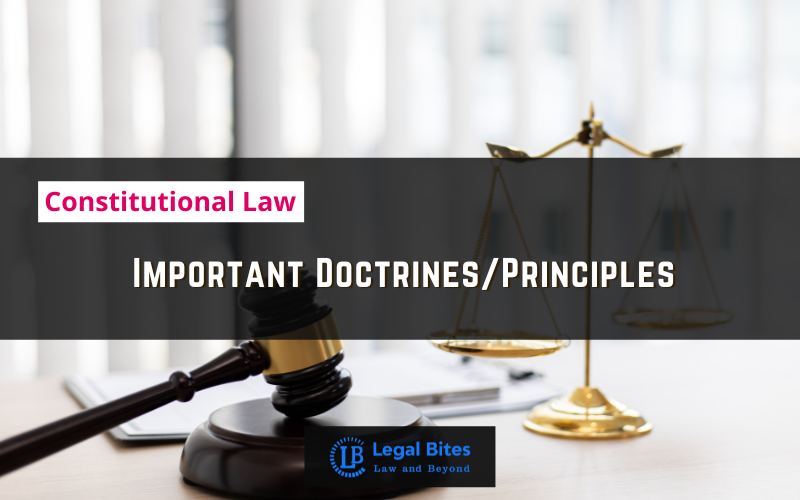Describe the facts and circumstances of the following case: [RJS 1991]
Question: Describe the facts and circumstances of the following case: [RJS 1991] Kanu Sanyal v. State of West Bengal (AIR 1974 SC 1361) State of Rajasthan v. Union of India (AIR 1977 SC 1361) Find the answer to the mains question only on Legal Bites. [Describe the facts and circumstances of the following case.] Answer Kanu Sanyal v.… Read More »
;![Describe the facts and circumstances of the following case: [RJS 1991] Describe the facts and circumstances of the following case: [RJS 1991]](https://www.legalbites.in/wp-content/uploads/2020/09/Constitution-mains.png)
Question: Describe the facts and circumstances of the following case: [RJS 1991] Kanu Sanyal v. State of West Bengal (AIR 1974 SC 1361) State of Rajasthan v. Union of India (AIR 1977 SC 1361) Find the answer to the mains question only on Legal Bites. [Describe the facts and circumstances of the following case.] Answer Kanu Sanyal v. State of West Bengal (AIR 1974 SC 1361) The petitioner who was an active member of a Naxalite group was remanded in the central jail Darjeeling for...
Question: Describe the facts and circumstances of the following case: [RJS 1991]
-
Kanu Sanyal v. State of West Bengal (AIR 1974 SC 1361)
-
State of Rajasthan v. Union of India (AIR 1977 SC 1361)
Find the answer to the mains question only on Legal Bites. [Describe the facts and circumstances of the following case.]
Answer
-
Kanu Sanyal v. State of West Bengal (AIR 1974 SC 1361)
The petitioner who was an active member of a Naxalite group was remanded in the central jail Darjeeling for having committed certain offenses. A charge sheet was filed against him and the offenses committed by him were such as could only be tried by a sessions court where the prisoner be brought before a special magistrate. For this purpose, a special warrant was issued by the special magistrate and until the proceedings were complete, the petitioner was remanded to prison. The petitioner thus filed suit stating that his detention in Darjeeling was illegal and violative of Art. 227. He claimed that the magistrate in Darjeeling had no right to try his cause as he did not have the adequate jurisdiction
In the instant case, it was held that instead of following the traditional method of producing the body before the court there must be a complete focus on the legality of the detention by looking into the facts and circumstances of the case. This case majorly focused on the nature and scope of the case and stated that this writ is a procedural writ and not a substantive writ.
In this decision it was stated that,
- The writ of Habeas Corpus cannot be issued when it is ascertained that the detention of the person so detained is not illegal and neither is it without jurisdiction. It would be completely out of its purpose in this case as there exists no right to implore the writ when the detention is necessary and purposeful.
- The court can hear the Rule Nisi even in the absence of the detained person. Rule Nisi is to “show cause” i.e. order of a court is final until the party to whom it applies shows reason otherwise. Once a Rule Nisi has been issued, the body of the detained has to be produced before the court.
2. State of Rajasthan v. Union of India (AIR 1977 SC 1361)
In the Parliamentary elections of March 1977, the ruling Congress Party suffered a massive defeat in nine States. After the elections, the Janata Party came to power at the Centre. On 17-4-1977 the Union Home Minister wrote letters to the Chief Ministers of nine States asking them to advise their Governors to dissolve the respective Assemblies and seek a fresh mandate.
Further, the Union Law insister in a broadcast said that the Governments in the nine Congress-ruled States had forfeited the confidence of the electorates and that they seek the dissolution of the State Legislature and obtains a fresh mandate. It was quite clear that if the suggestion was not acted upon, the Union Government would invoke emergency powers under Article 356 and impose President’s Rule and dissolve the State Legislatures though this was not mentioned in the letter.
Six of these nine States in their writ petition to the Supreme Court submitted that the Home Minister’s letter and the radio broadcast of the Law Minister constituted a clear-cut threat of dissolution of the Assemblies and disclosed grounds which are prima facie outside the purview of Article 356 of the Constitution.
The Court rejected the contention and it was brought out that, when compared with Article 352(1), it is evident that Article 356(1) does not speak of any ‘emergency’ of any kind, the word ‘emergency’ is not used anywhere under Article 356. But, in general, terms and due to the consequences provided under 1q it is generally referred to as an emergency.
The words ‘carried on in accordance with the constitution should not be interpreted literally. If interpreted literally, it would cover failure on the part of State Government with regards to all the provisions of the constitution, whatever might be the degree and extent of such failure. The machinery of government does not ordinarily fail if this or that provision of the constitution is violated by the acts of the state.
Important Mains Questions Series for Judiciary, APO & University Exams
- Constitutional Law Mains Questions Series Part-I
- Constitutional Law Mains Questions Series Part-I
- Constitutional Law Mains Questions Series Part-II
- Constitutional Law Mains Questions Series Part-IV
- Constitutional Law Mains Questions Series Part-V
- Constitutional Law Mains Questions Series Part-VI
- Constitutional Law Mains Questions Series Part-VII
- Constitutional Law Mains Questions Series Part-VIII
- Constitutional Law Mains Questions Series Part-IX
- Constitutional Law Mains Questions Series Part-X



